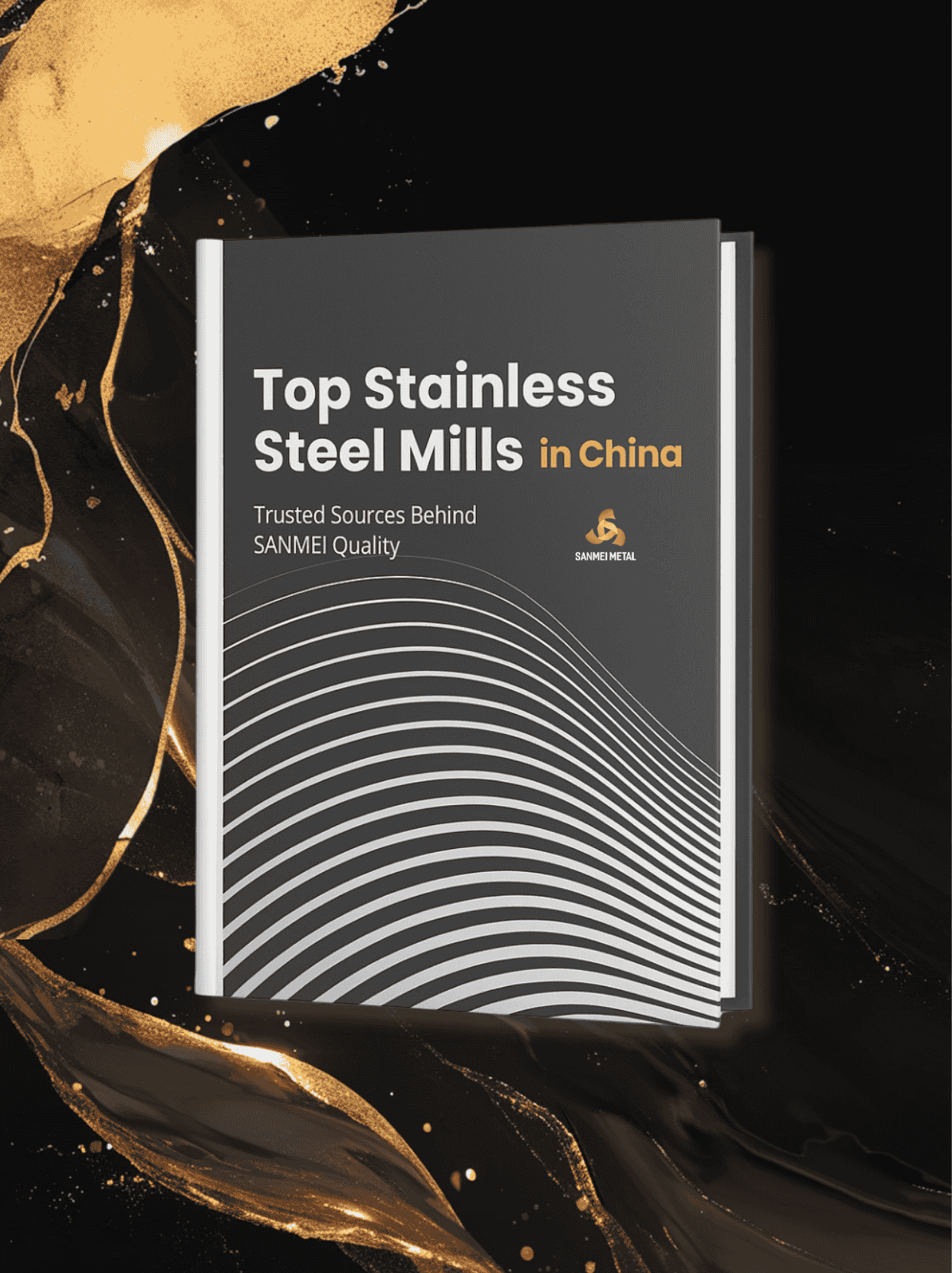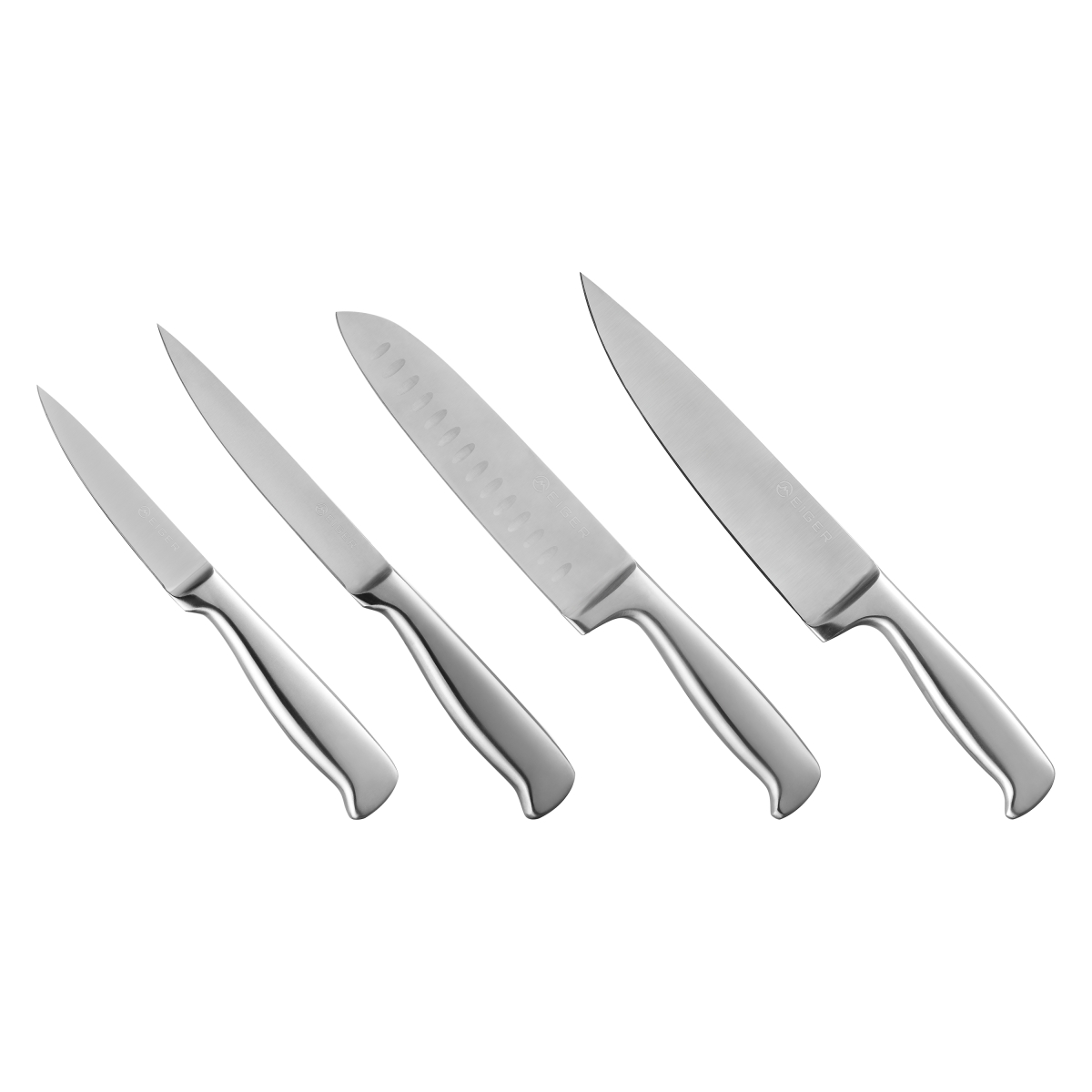
Adquira o seu LIVRE Acesso: Dossier da Siderúrgica #1 da China
Orientado para o comprador: combine fábricas por grau/acabamento/largura-espessura/aplicação
BAOWUTsingshanLiscoTisco


Excelente resistência à corrosão para evitar contaminação

Não reatividade com alimentos ácidos, salgados ou quentes

Superfície lisa e lavável para padrões de higiene

Durabilidade em alta temperatura para ambientes de cozinha
Equipamentos de cozinha de aço inoxidável, como panelas, torradeiras e grelhas, devem ser principalmente atóxicos e seguros para contato com alimentos. Além disso, fatores de desempenho como resistência à corrosão, tolerância a altas temperaturas e facilidade de limpeza e manutenção são cruciais para utensílios de cozinha de alta qualidade.
Os aços inoxidáveis 304, 304L, 316, 316L, 321, 309S e 310S são conhecidos por manter excelente desempenho em ambientes de alta temperatura e resistir à ferrugem, o que os torna ideais para a fabricação de diversos equipamentos de cozinha.
Móveis e eletrodomésticos de aço inoxidável para cozinha não devem apenas atender aos requisitos de resistência à corrosão e alta resistência, mas também ser esteticamente agradáveis como móveis de exposição. Além disso, limpeza e manutenção fáceis são essenciais no ambiente de cozinha carregado de gordura.
Os aços inoxidáveis 304, 304L, 409, 430, 2205, 2207, 436, 439 e 441 possuem excelente resistência à corrosão, propriedades mecânicas e podem manter uma aparência atraente, tornando-os adequados para a fabricação de móveis e eletrodomésticos de cozinha.
O aço inoxidável usado em recipientes e utensílios de armazenamento de alimentos não deve reagir com alimentos. Além disso, esses recipientes precisam de alta resistência à corrosão devido a aditivos em alguns alimentos. A limpeza fácil também é uma vantagem significativa para esses materiais.
O aço inoxidável usado em talheres e copos deve ter boa dureza e resistência ao desgaste, especialmente para facas, onde alta dureza e resistência são essenciais. Para os consumidores modernos, talheres e copos não são apenas recipientes, mas também itens decorativos que aumentam o apelo estético de sua coleção.
| Nota | Principais recursos e aplicação |
|---|---|
| Série 201 (J1~J4) | Recipientes econômicos para contato com alimentos de curto prazo |
| 304 / 304L | Padrão industrial para uso em alimentos, resistente à corrosão e ao calor |
| 316 / 316L | Alto desempenho para processamento de alimentos ácidos, salgados e frutos do mar |
| 321 / 309S / 310S | Resistência a altas temperaturas, ideal para fornos industriais e churrasqueiras |
| 409L / 410 / 410S | Durável, resistente ao desgaste, ideal para facas e talheres |
| 420J1 / 420J2 | Alta dureza para ferramentas e utensílios de corte |
| 430 / 436 / 439 / 441 | Boa conformabilidade e custo-benefício, amplamente utilizado em cozinhas residenciais |
| 2205 / 2207 | Aços duplex para ambientes de processamento severos, excelente resistência e resistência à corrosão |
Na SANMEI, oferecemos aço inoxidável certificado de qualidade alimentar em forma de bobina e folha, com acabamentos de superfície como 2B, BA, No. 4, HL e polimento espelhado — ideal para equipamentos de cozinha, eletrodomésticos e linhas de processamento de alimentos.
Mas como saber se o que você está comprando é realmente seguro para alimentos? Em mercados como a China, onde os padrões de materiais variam, é fundamental verificar a origem. 👉 O aço inoxidável de qualidade alimentar que você compra na China é realmente de qualidade alimentar?
Leia nosso guia para saber o que verificar e como escolher o fornecedor certo.
Sede:
Centro de Criação, nº 142, Rua Yuhe, Cidade de Lecong, Distrito de Shunde, Cidade de Foshan, Província de Guangdong, China. 528315
Fábrica: Cidade Logística de Liyuan, Cidade de Chencun, Distrito de Shunde, Cidade de Foshan, Província de Guangdong, China. 528313
Base de apoio local na Austrália: (Yatala, QLD) – Chegando em 2026